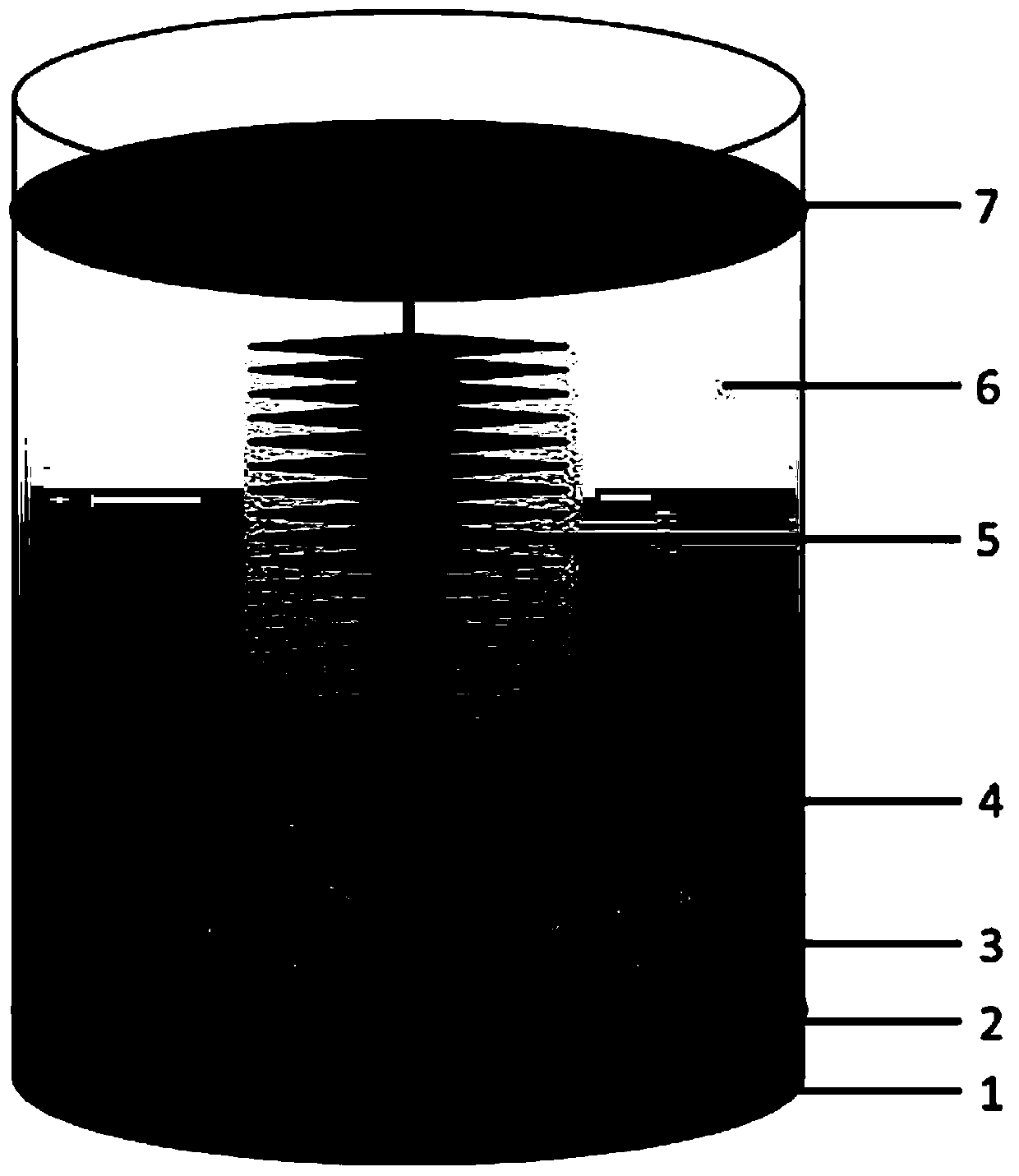System and method for purifying organic pollutants in lake sediment and lake water
A technology of organic pollutants and lakes, applied in the field of environmental engineering, can solve the problems of large-scale application and needs of bioelectrochemistry, and achieve the effects of simultaneous efficient degradation, promotion of degradation efficiency, and efficient removal
- Summary
- Abstract
- Description
- Claims
- Application Information
AI Technical Summary
Problems solved by technology
Method used
Image
Examples
Embodiment 1
[0027] A system for simultaneously purifying lake sediment and refractory organic pollutants in lake water to treat organic matter includes the following steps:
[0028] (1) Start-up of the electrochemical reactor of the system
[0029] Using the return sludge in the secondary sedimentation tank of the sludge sewage treatment plant, inoculate the sludge on the anode and BER part of the MFC part of the system according to the volume ratio of polluted soil and sludge at a ratio of 30:1, supplement nutrients once every 24 hours, and statically Set it aside for 7-10 days, and complete the initial start-up when the system's power generation current is greater than 0.2mA. The basic nutrient solution composition (1L solution) is as follows: 400mg glucose, 330mg NaCl, 134mg NH4Cl, 33mg NaH2PO4, 18mg Na2HPO4, 340mg NaHCO3, 15mg MgSO4 7H2O, 2mg ZnSO4 7H2O, 2.2mg MnSO4 H2O, 1mg FeSO4, 0.24mg CoCl2 · 6H2O, 15 mg CaCl2 and 1.17 mg (NH4)6Mo7O24 · 4H2O.
[0030] (2) The reactor simultaneou...
PUM
 Login to View More
Login to View More Abstract
Description
Claims
Application Information
 Login to View More
Login to View More - R&D
- Intellectual Property
- Life Sciences
- Materials
- Tech Scout
- Unparalleled Data Quality
- Higher Quality Content
- 60% Fewer Hallucinations
Browse by: Latest US Patents, China's latest patents, Technical Efficacy Thesaurus, Application Domain, Technology Topic, Popular Technical Reports.
© 2025 PatSnap. All rights reserved.Legal|Privacy policy|Modern Slavery Act Transparency Statement|Sitemap|About US| Contact US: help@patsnap.com

